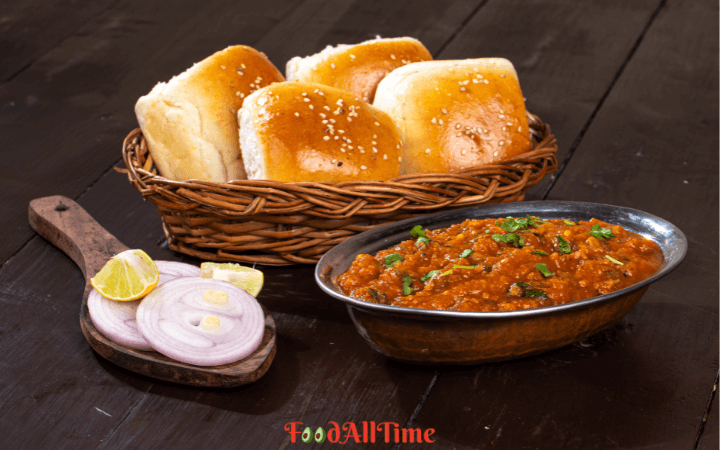Affiliate Disclosure: Every purchase made through our affiliate links earns us a pro-rated commission without any additional cost to you. We may earn an affiliate commission if you order any product. Here are more details about our affiliate disclosure.
How To Make Homemade Danish Pastry Dough

My favourite handmade pastry dough. Flaky, tender, and buttery.
It’s simple to make Danish pastry at home if you take your time and read through all of the easy directions.
The dough must be adequately chilled whenever you are working with it.
Due to all this chilling, Danish pastry is an excellent recipe to begin the night before and serve as brunch the following morning.
Or even prepare the dough three days in advance, so your work is reduced when your guests arrive.
Or if you’re super organized then make the dough one month ahead of time and freeze it.
It’s essential to know that the dough recipe makes 2 lbs of dough, which compares to two braids. One braid should approximately serve 4-6 people.
Make two braids for company. If you don’t need that many tempting danish bread around, freeze the second half of the dough for a later.
Depending on how you like your danishes, you can cut the pastry dough into different shapes and sizes. This recipe details how to make the dough into a braid.
All of the ingredients except the softened margarine must be cold. On really hot days you may want to decrease the amount of yeast slightly so that the dough does not rise too fast.
Due to the limited amount of sugar and butter in the dough, and the soft consistency, these precautions keep the yeast from taking over before you have a chance to roll in the fat.
Margarine is used for this dough because the light and flaky texture is more important than the butter flavour.
Because the fat and the dough need to be at the same consistency to give the best-layered structure, and margarine has a higher melting point than butter, margarine is preferable with such soft dough.
You may need to adjust the amount of salt called for in the recipe, depending on the salt content of the margarine you are using.

How To Make Homemade Danish Pastry Dough
Depending on how you like your danishes, you can cut the pastry dough into different shapes and sizes. This recipe features how to shape the dough into a braid.
Prep Time 5 hours 30 minutes
Cook Time 13 minutes
Total Time 6 hours
Servings 2 braids
Author Ranjeeta Nath Ghai
Ingredients
Pastry
- ¼ cup 60ml warm water, 105-115°F
- 2 and ¼ tsp active dry yeast 1 standard package
- ½ cup 120ml milk, at room temp
- 1 large egg at room temp
- ¼ cup 50g granulated sugar
- 1 tsp salt
- 2 and ½ cups 315g unbleached all-purpose flour (spoon & leveled)
- 14 tbsp 210g unsalted butter, cold
Egg Wash
- 1 large egg
- 2 tbsp 30ml milk
Danish Filling :
- 570 gm cake or cookie scraps.
- 180 ml cup water.
- 910 gm almond paste.
- 225 gm granulated sugar.
- 455 gm softened butter.
Instructions
Instruction for Pastry :
- Mix the water and eggs, then put the mixture and the flour in the refrigerator, for at least 1hour before making the dough.
- Shape the cold margarine into a 10-inch square and put it in the fridge. It should be stiff and cold, but not hard when the dough is ready.
- Dissolve the yeast in the water and egg mixture and mix in sugar and salt.
- Keep aside a handful of the flour and mix in the balance. Add the softened margarine and plenty of the reserved flour to produce a soft and sticky dough.
- Position the dough on a floured table and shape into a 14-inch square.
- Places the chilled margarine square diagonally on the dough so that there are four dough triangles showing. Fold the triangles in toward the centre and seal in the margarine.
- Roll the dough as carefully and evenly as possible into a rectangle, 30 x 20 inches. Use loads of flour to prevent the dough from sticking to the table and the rolling pin.
- Give the dough two single turns in succession.
- Cover the refrigerate for 30 minutes.
- Roll the dough to the same size as before and make two additional single turns. Carefully place the dough on a sheet pan and refrigerate, covered for 30 minutes.
- Roll the dough out to about ½ inch thick, cover with plastic wrap, and place it in the refrigerator depending on how hot the room is where you are working and when you are going to make up the Danish. In either case, the dough should chill for at least 30 minutes.
- Make up the Danish according to the individual recipes and let the pieces rise until half-doubled in volume. Watch carefully to check on their rising. If they rise too long they will lose their flakiness and get spongy; if they do not rise enough, the fat will run out when they are baked.
Instruction for Danish Filling :
- Mix the scraps with just sufficient water to make a stiff paste. Keep stirring until smooth.
- Combine the almond paste and sugar.
- Include the butter slowly, and beat until smooth.
Note: This filling will keep fresh at room temperature for several days. If it is to be stored longer, it should be refrigerated.
Recipe Notes
- Individual pieces of formed Danish and Danish dough can be prepared ahead and stored in the freezer with excellent results.
- However, the pieces should never be frozen after baking.
- To use frozen Danish made up in individual pieces, let them thaw slowly, preferably in the refrigerator, before placing them in the proof box to rise.
- Use frozen dough as soon as it has thawed enough, in the refrigerator or at room temperature, to be workable.
- Do not brush the Danish with egg wash before baking unless you are covering them with an almond or streusel topping. Instead, brush the pastries with simple syrup as soon as they are out of the oven, then let them cool completely and ice lightly with white fondant or simple icing.
Quick Overview

Product Name: CCDS Bakers Shortening
Product Description: CCDS Bakers Shortening is a fantastic replacement to butter when making puff pastry. It doesn't melt and make pastry greasy. It is an essential ingredient when making Croissants, Danishes or other breakfast pastries.
Brand: CCDS
Offer price: 350.00
Currency: INR
Availability: LimitedAvailability
Offer URL: https://amzn.to/37klm2o
-
Quality of Shortening
-
Packaging
-
Health Benefits







